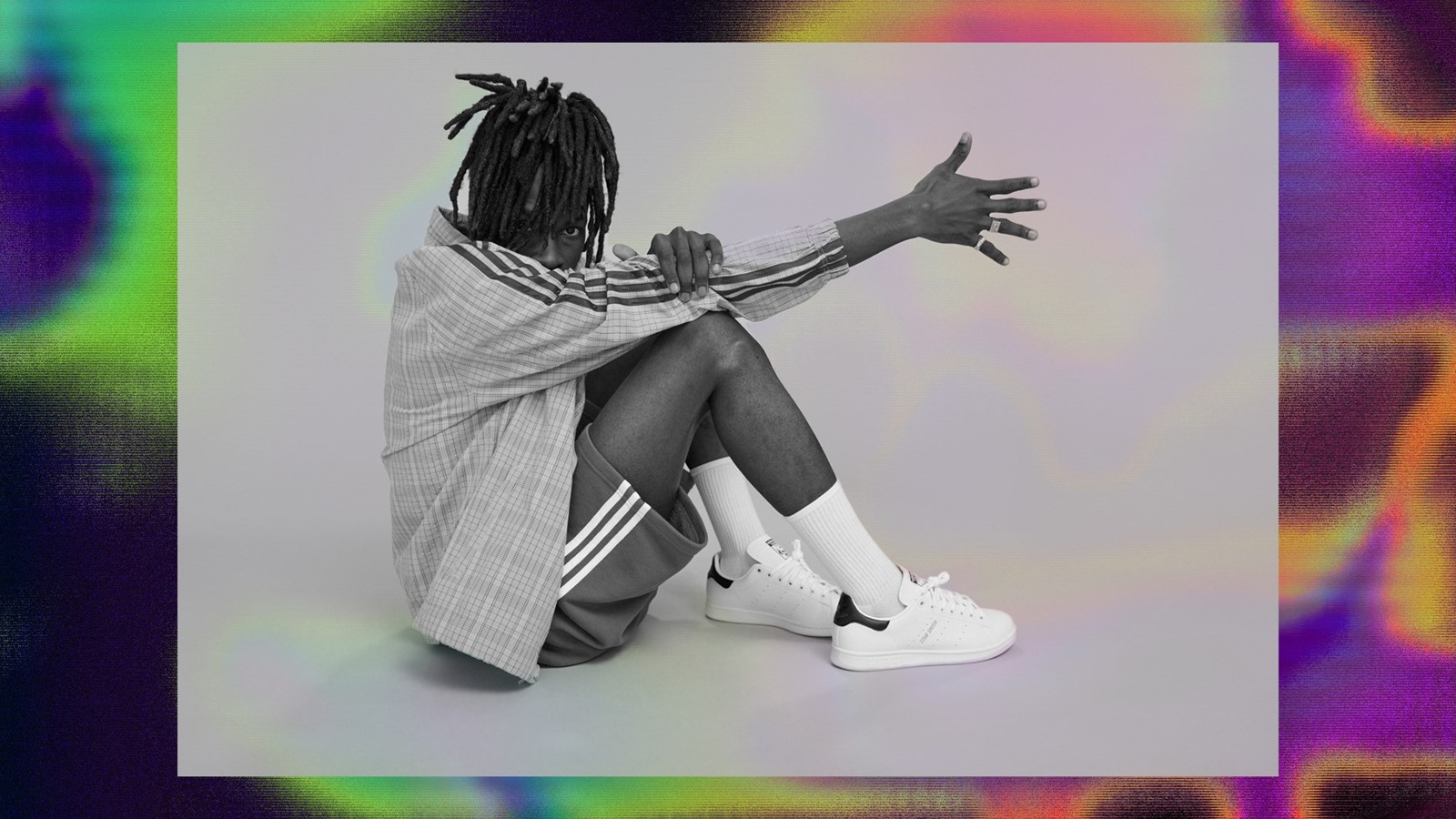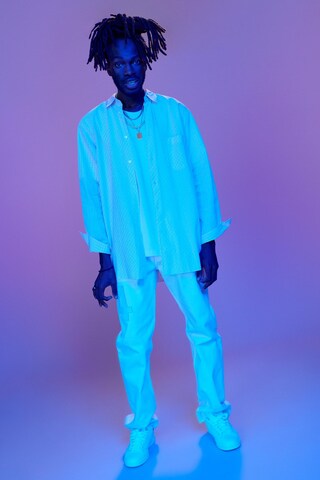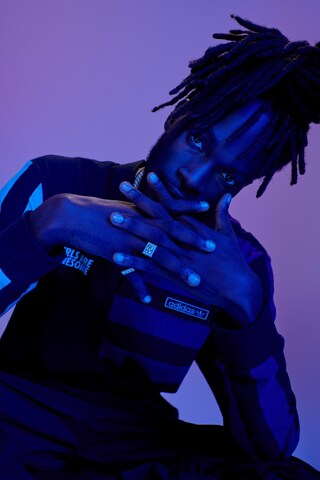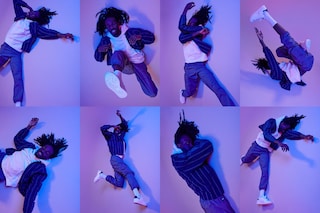The 23-year-old Ghanaian-born designer and technologist has worked alongside Nipsey Hussle and Kanye West – here we go deep on the new realities he wants to create
Welcome to A Future World – Dazed's network, community, and platform focusing on the intersection of science, technology and pop culture. Throughout April, we're featuring conversations and mission statements from the people paving new pathways for our planet: activists, inventors, fashion pioneers, technologists, AI scientists, and global youth movements, alongside in-depth editorial exploring the new realities for our future world
This article was created in partnership with adidas Originals
23-year-old Iddris Sandu was born in Accra, Ghana, before moving to Harbor City, Los Angeles when he was three years old. Relentlessly curious about technology from an early age, he’d drive his mum crazy by taking apart TV remotes and rewiring them to make new things he could play with. At 13, he taught himself to code at the Torrance Public Library in Compton library, and a decade later has his sights firmly on shaping the world – not just through his work with spatial reality and the development of his virtual interface Canvas, but also by laying the foundations for a next generation of kids to succeed, through mentoring schemes and building schools in Ghana.
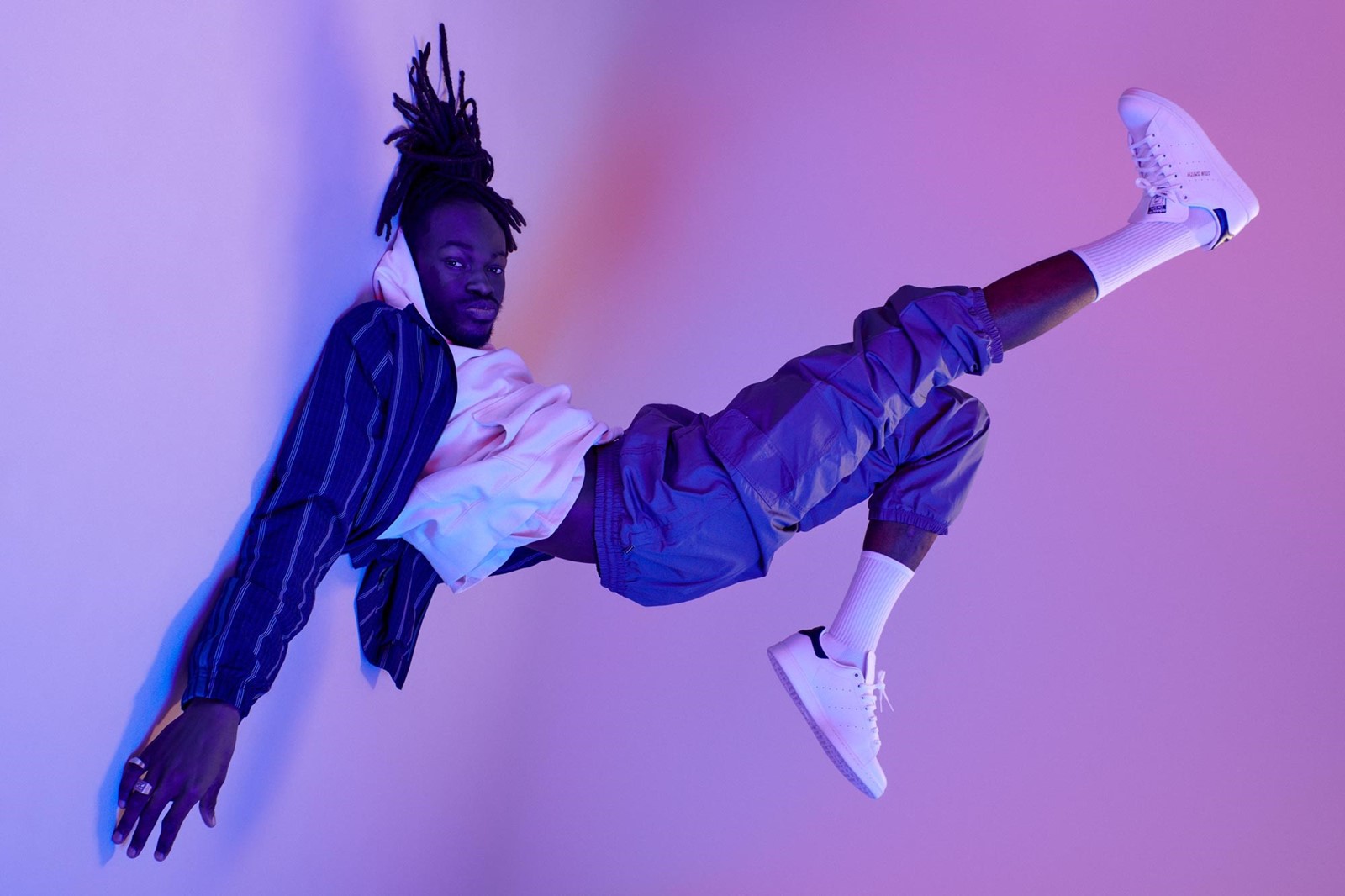
A digital architect and futurist, Sandu has also collaborated with titans in the hip hop world, namely the late Nipsey Hussle and Kanye West. In 2017, Sandu and Nipsey Hussle opened the Marathon store in Crenshaw, LA, the world’s first “smart store” in which visitors could unlock augmented reality experiences and access exclusives by interacting with objects in the store. Tragically, Nipsey Hussle was shot dead outside the Marathon store in 2019, leaving behind him an immense legacy, a vision of what the world could be for Crenshaw kids through education and collaboration.
Sandu worked on a top-secret project called Yeezy Sense after introducing Kanye to quantum computing, spatial mapping, and how these technologies can inform his art. Currently, he’s a design and tech consultant for West’s brand, and recently joined adidas’ mission to help #EndPlasticWaste. He’s... busy.
Here, we talk about his visions of a future world, diversity in technology, and – as he seeks to create new versions of reality – what the word means to him.
You’ve been mentoring kids in Compton, you set up a new school in Ghana to technological literacy. You’ve also worked with politicians to launch STEM programmes. Why is this community work so important to you?
Iddris Sandu: People have this notion of specific technologies and where they come from. Silicon Valley is called Silicon Valley because of the silicon chips. I wanted to see what could happen if the next generation of self-driving cars or computer vision technology, or the next Instagram, the next Uber, the next utility, could come from a kid from Compton, or a kid from Chicago, or a kid from Atlanta. What if it didn't have to be the default? What if we didn't have to be subject to the realities of how a lot of these industries were birthed? The people that sat down and created the Constitution, you know they more than likely all look the same, therefore, the supreme law of the land was inherited by it, right? And the same thing happens with technology.
Having worked with Nipsey Hussle and Kanye West, you know the importance of mentors. How vital have those two people been to your perspective and to your work?
Iddris Sandu: Nipsey is a huge reason why I feel like my work in the cultural space has been amplified. I was able to take my technical skills, my concrete understanding of design, hardware and software, vertical integration, and his relentless curiosity to want to bring those worlds to hip hop. Kanye is an artist that’s known for being able to take different palettes from so many different places, especially in dragging from spaces that you would normally not see in hip hop, or are coming from someone that is Black, and be able to colour outside of the lines and deliver a masterpiece. Nipsey worked the same way, but from a business standpoint Nipsey was able to take the high-level business thinking and design thinking associated with business and finance, and apply it to his brand. The crux of what they both represent was very crucial to how I think, and being able to collaborate with large artists like them definitely just opened my mind up to the possibilities.
What inspiration do you draw from art when you’re creating new technology?
Iddris Sandu: At the heart of what I do is architecture. I'm a designer. I’m known for tech, but I’m really a visualist. I grew up on a very strong pillar of design as a form of expression. So my technical abilities come from the level of inherently wanting to create a better world, which is what architects do – architects are doctors of the design world, right? If you’re a designer, or you’re an architect, you’re always just playing an efficiency game. You’re always just taking the number 99.99 and you’re adding another nine to it. That’s all we do. All designers do is just add nines. It’s a nine game I’m telling you, it’s like 99.9999% more efficient. I’m a designer who genuinely wants to shift the world in a better way, understanding that we are drowned in a world of excess over accessibility.
But hip hop has also amplified technology on a whole other level. You had people like Grandmaster Flash that were able to take the turntable (and reshape culture).
You had the MPC…
Iddris Sandu: Exactly. Some of the greatest producers are samplers, which makes them programmers. Just like a computer programmer will sit down and use a tool like Xcode, or Android Studio to build an app, they use the MPC, they compose, and they produce music by manipulating the data, to play the nine game.
“I wanted to see what could happen if the next generation of self-driving cars or computer vision technology could come from a kid from Compton, or a kid from Chicago, or a kid from Atlanta” – Iddris Sandu
How important is sustainability and the climate crisis to you in the work that you do?
Iddris Sandu: Sometimes you can view things through people and not see the bigger picture. But when you open the door, you really see how important certain things can be. And one of those things has been spatial reality. My collaboration with Nipsey – that was spatial reality.
People will look at it and say, ‘Oh, that’s not really necessary, right?’ Like, creating a spatial experience, or AR or VR is really, really cool. It’s really awesome. But I don’t know if it’s anything that could change the world.’
For me, I have so many ideas so it’s like ‘why are you using your skills to focus on a technology that cannot change the world, or cannot influence the world in the most positive way?’ And the reason why I triple down on spatial reality is because that is one of the greatest accelerators of sustainability. The reason why the world is so unsustainable is that we’re creating so much product. And if we were able to create digital products to replace those physical products, we can produce more, all while generating less amounts of energy. So, an example of that is VSTs – virtual sound instruments – those were pretty much spatial instruments.
In fashion, when people think of sustainability, they think of the materials that we’re using in a shoe, but it can also be you know instances where people can have access to doing things they would have normally loved to do without physically having to be there. What if I didn’t do a whole shoe, which is what we’re working on with adidas right now. What if I could see a model of this thing without having to get in my car and burn gas. We’re all familiar with what goes down in the Congo, right? Kids are mining kota and that’s being put into phones and chips. But what if we didn’t have to make physical phones anymore?
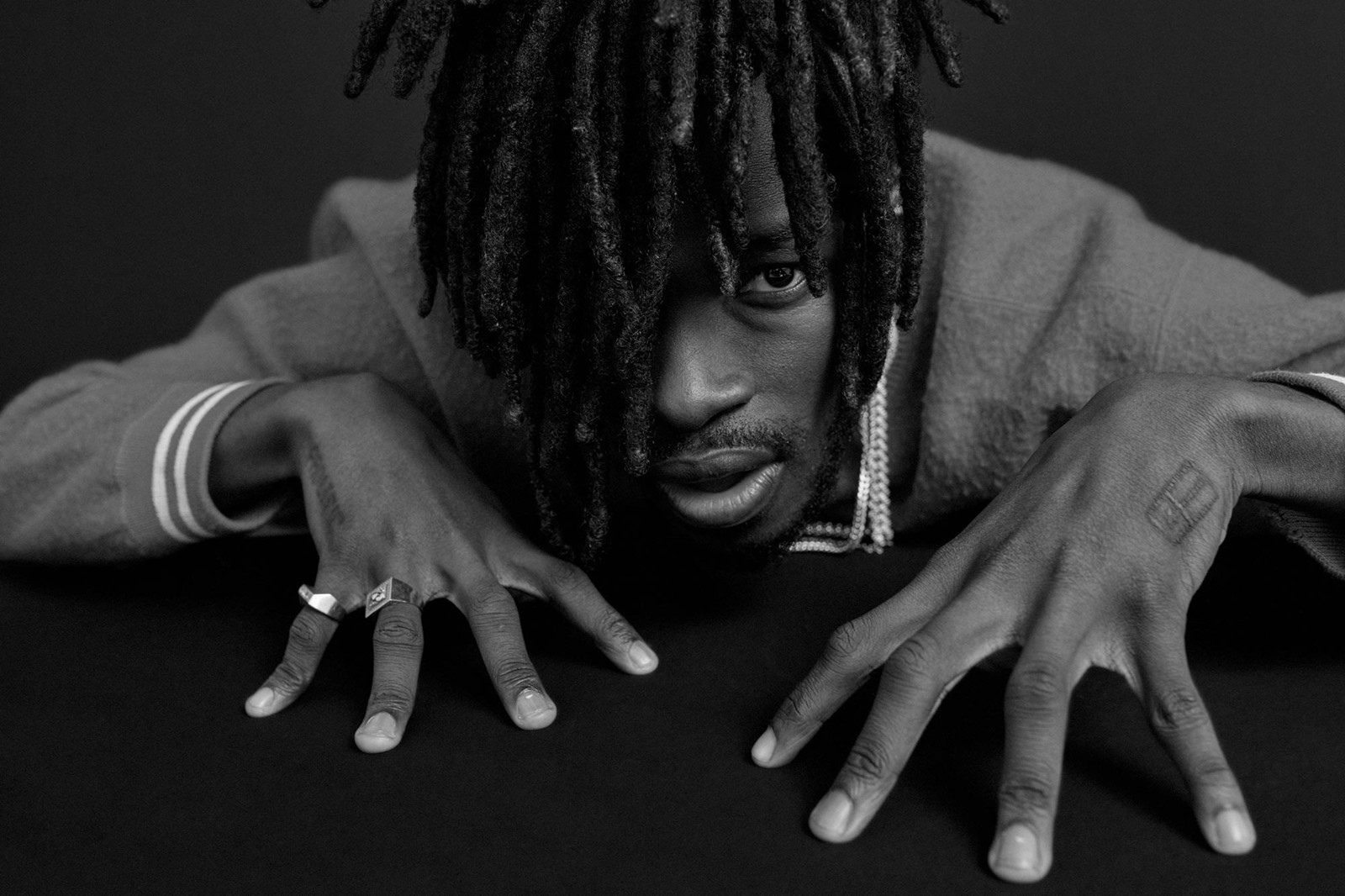
You’re described as a ‘digital architect‘ and I certainly see you as a futurist. Do you have any predictions for what the world will look like in 20 years?
Iddris Sandu: I think we’re moving to natural language being the basis of interaction again, and people having higher levels of empathy. Speaking about somebody on Twitter or on Instagram, there’s a wall right? You're not capturing that person’s expression or how they might be feeling in real time, hence why a lot of people say things online to each other that they would never say in person. The barrier is there so we’re naturally going to move into a new language that’s going to be based on emotion more than anything. So I see that. I also see us living in a world that’s highly decentralised as we’re starting to see right now with the blockchain and Bitcoin. A world that’s decentralised will cause a ripple effect of accessibility for everyone – there’s going to be a high level of accountability for everyone but also the highest level of freedom.
Sustainability is going to be a huge arm. I guarantee you in the next 20 years people are going to be farmers, people are going to grow their own food. Beyond meat right we’re just playing a nine game – who can get to the closest to artificial meat with it tasting exactly like meat. It’s happening now, people are more conscious than ever, they want to know what’s going into their minds, their food.
You’re someone who creates new realities. What does reality mean to you?
Iddris Sandu: That’s a very beautiful question. Earlier on in my life I was convinced that reality was a simulation and that the simulation was actually reality. When I create, dream, or come up with ideas I’m more centred in that being a reality. That’s why movies, books and poems inspire and move us in more ways than our actual reality can. Documentation and storytelling is an essential part of being human. My definition of reality is being able to take your dreams and exist within them.
What is the best piece of design the world has ever seen and why?
Iddris Sandu: The human body. I had a discussion with someone about a month ago and I was talking about this aspect of design called biomimicry, it’s the study and interpretation of nature to enhance the world around us. Again, we’re playing a nine game – we want to design things like the bullet train that were inspired by the kingfisher bird’s beak. We emulate nature to enhance our known reality. Neural networks, computer vision, or artificial intelligence, are all modelled on the human brain. All the technology that we create is based on our current limitation or understanding of self. Pretty much every single thing created is a result of the best thing that we’ve always aspired to design – a human body.
Additional credits:
Grooming - Sonia Lee for Exclusive Artists using R+Co
Local Production - CARLYE BURKE

